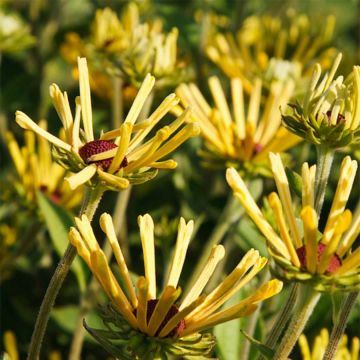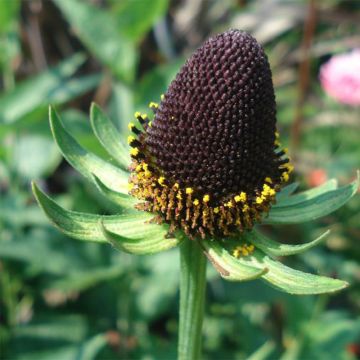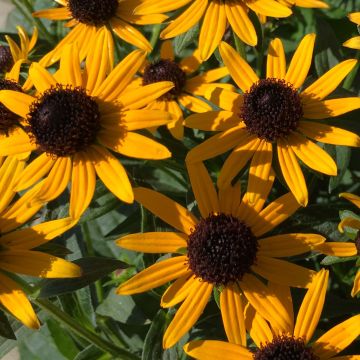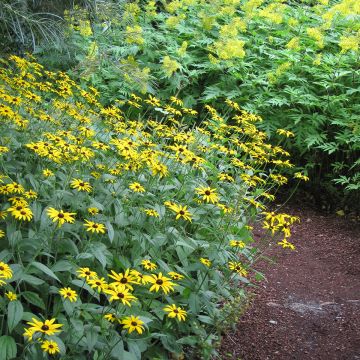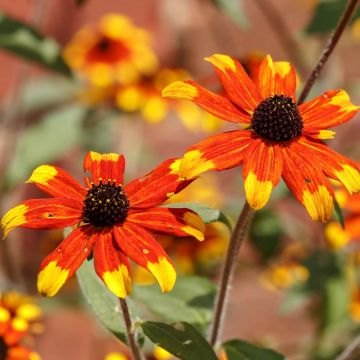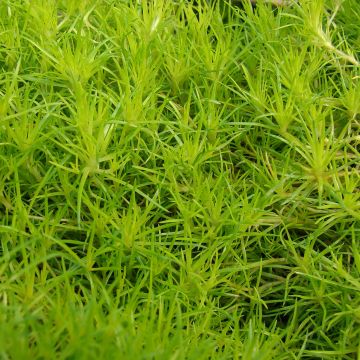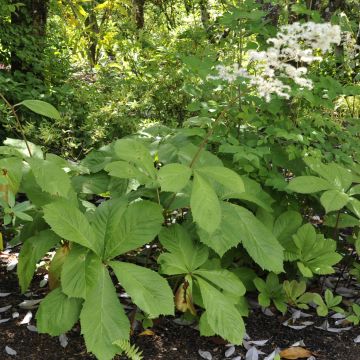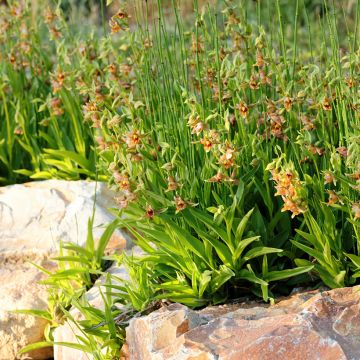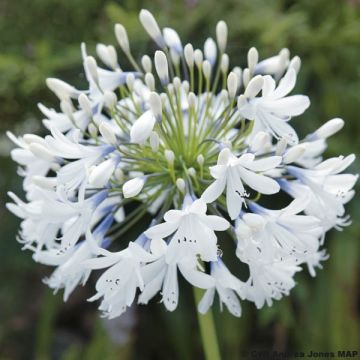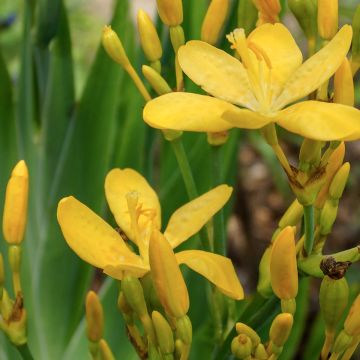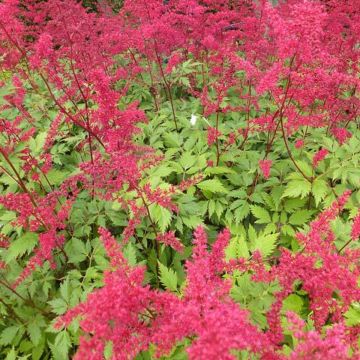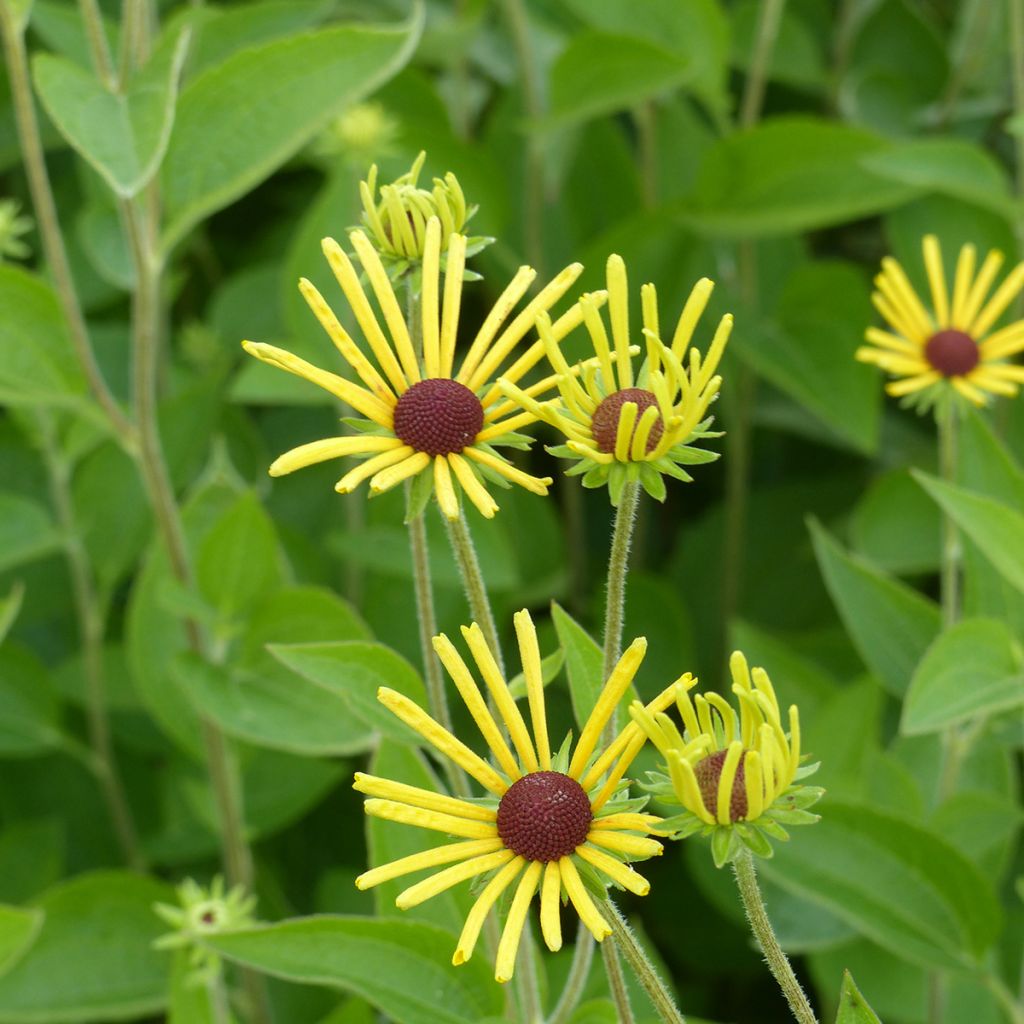

Rudbeckia subtomentosa Henry Eilers
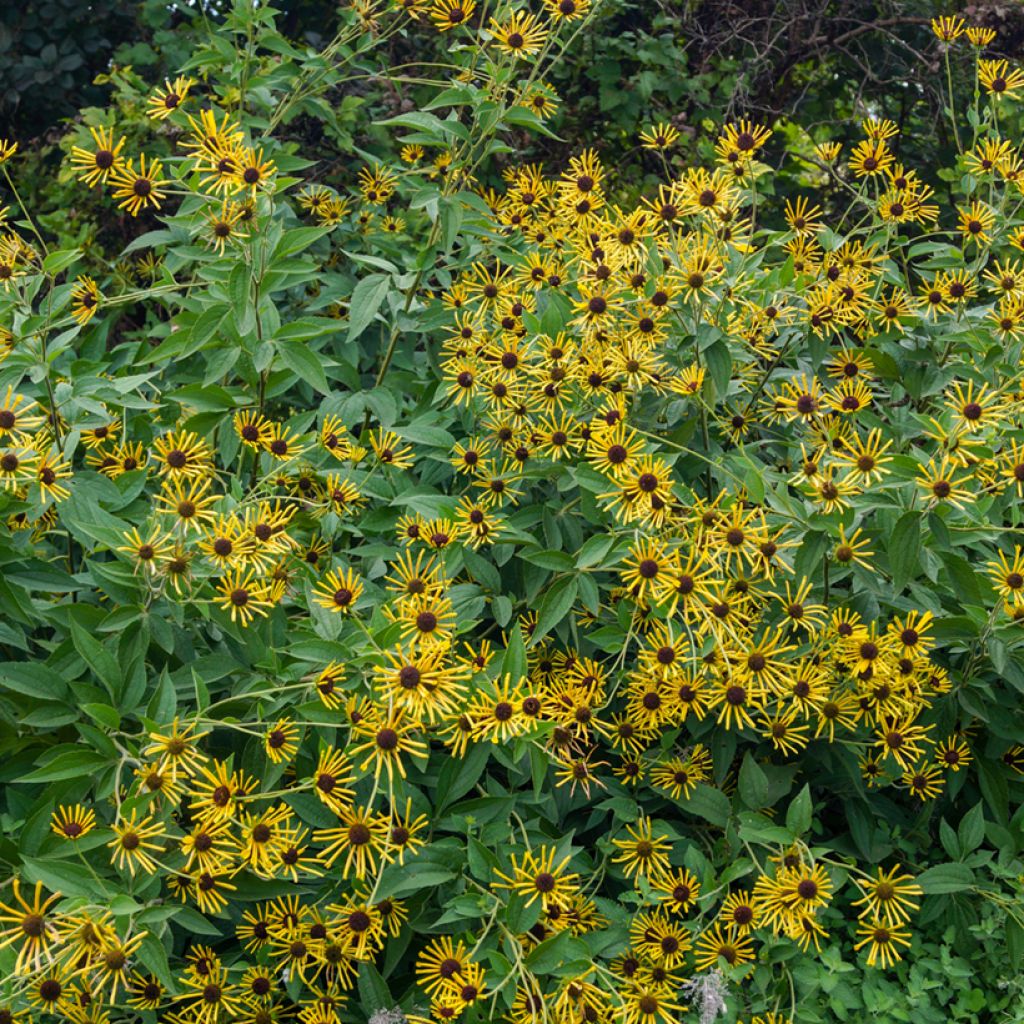

Rudbeckia subtomentosa Henry Eilers
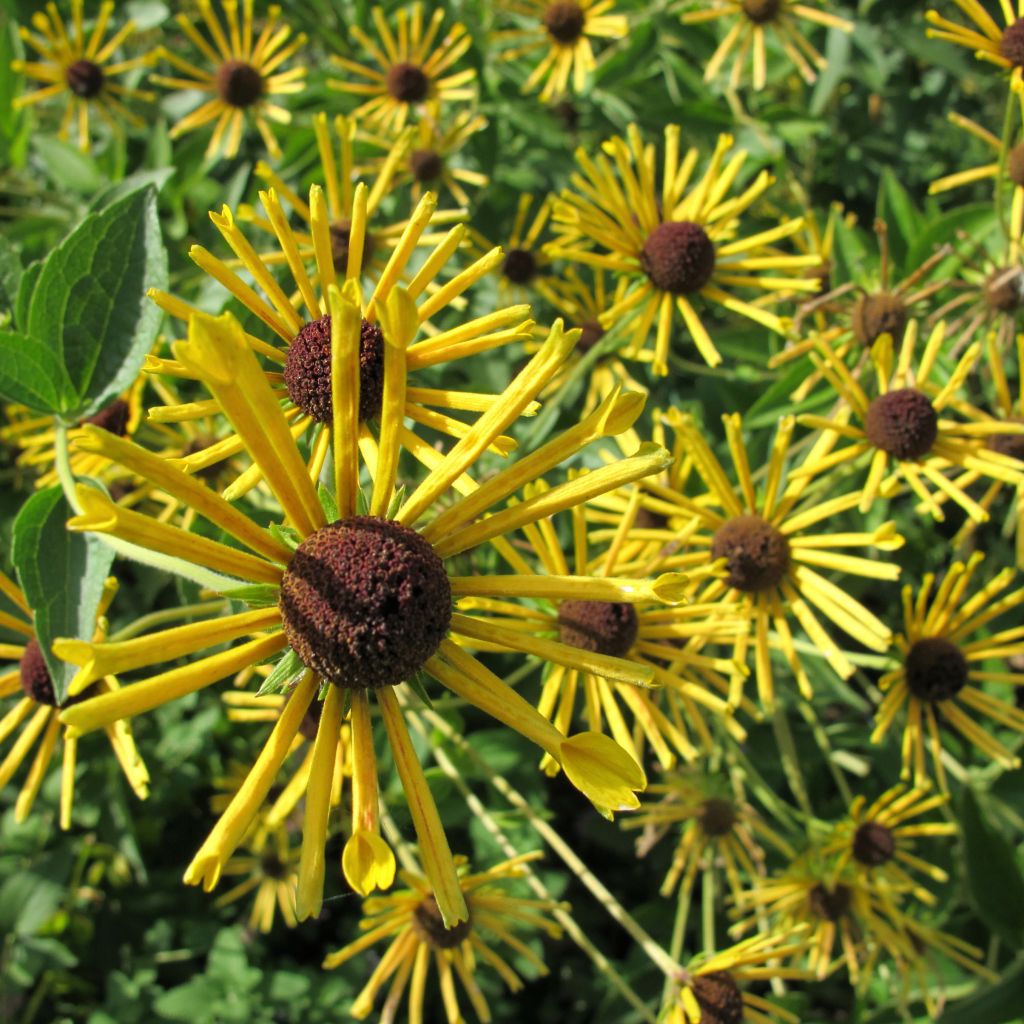

Rudbeckia subtomentosa Henry Eilers
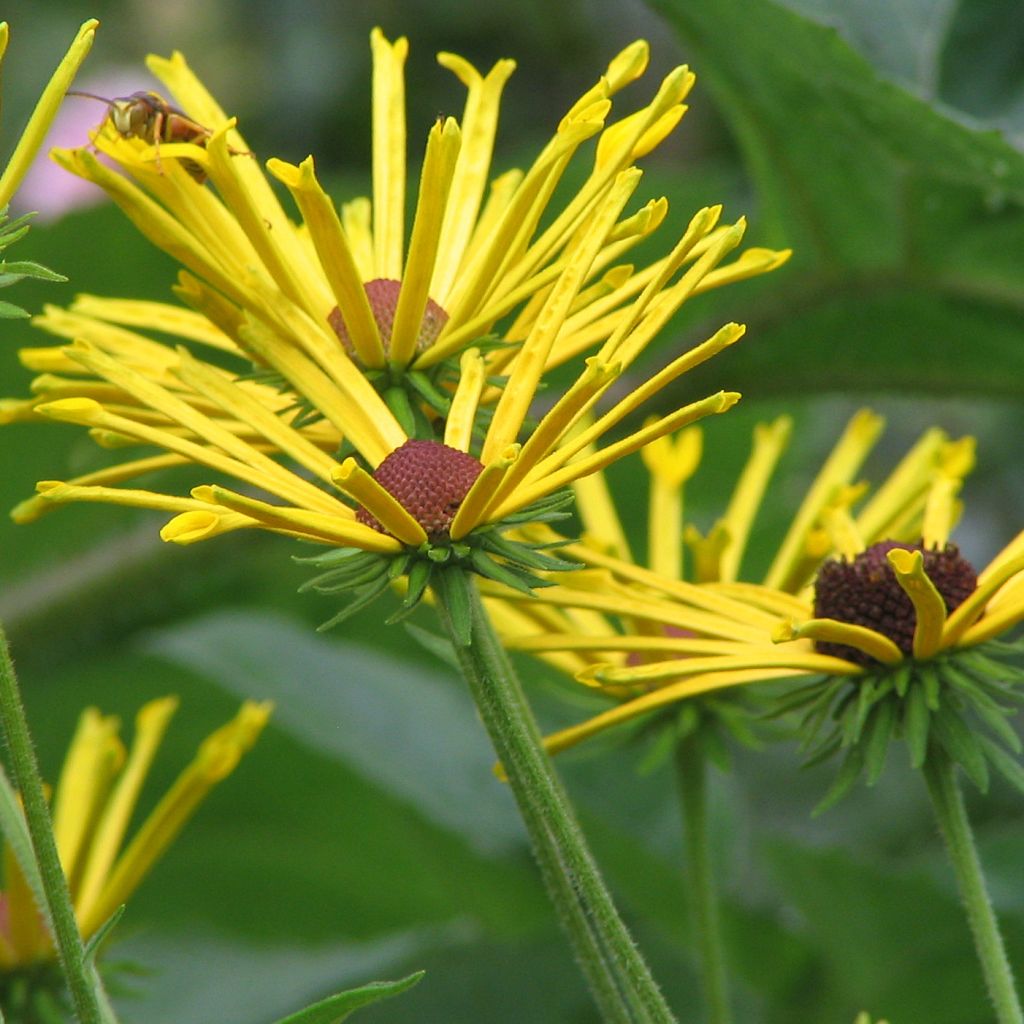

Rudbeckia subtomentosa Henry Eilers
Rudbeckia subtomentosa Henry Eilers
Rudbeckia subtomentosa Henry Eilers
Sweet Coneflower, Sweet black-eyed Susan
Beautiful revival. Lovely wild flowers that don't care about the wind.
Cindy, 29/09/2021
Special offer!
Receive a €20 voucher for any order over €90 (excluding delivery costs, credit notes, and plastic-free options)!
1- Add your favorite plants to your cart.
2- Once you have reached €90, confirm your order (you can even choose the delivery date!).
3- As soon as your order is shipped, you will receive an email containing your voucher code, valid for 3 months (90 days).
Your voucher is unique and can only be used once, for any order with a minimum value of €20, excluding delivery costs.
Can be combined with other current offers, non-divisible and non-refundable.
Home or relay delivery (depending on size and destination)
Schedule delivery date,
and select date in basket
This plant carries a 12 months recovery warranty
More information
We guarantee the quality of our plants for a full growing cycle, and will replace at our expense any plant that fails to recover under normal climatic and planting conditions.

Would this plant suit my garden?
Set up your Plantfit profile →
Description
The Rudbeckia subtomentosa 'Henry Eilers', related to the large coneflowers, is a tall perennial plant, astonishing, melliferous, essential in a natural garden. Generous and highly floriferous, it is adorned with dark green and velvety foliage, up to the top of its very sturdy floral stems against the wind. From summer to autumn, without interruption, pleasantly scented flowers succeed each other, resembling yellow daisies with large brown-redish centres, original with their rolled up ligule collars that widen into spatulas at their tips. Loved by insects and birds, this wild-looking plant will be appreciated by gardeners at the back of flower beds. When autumn comes, its sunny flowering will mix with the flamboyant foliage of bushes. While it tolerates dry soils well, this rudbeckia is more beautiful in deep and moist soil, in the sun but also in partial shade.
The Rudbeckia subtomentosa belongs to the aster family. This large perennial, native to the American Midwest, the Ozark Mountains, and the southern Great Plains of the USA, grows wild in diverse places such as open wooded areas, dry or wet meadows, or along streams. Henry Eilers, a passionate horticulturist, discovered and named the cultivar 'Henry Eilers'. This plant surpasses a wild population of R. subtomentosa, and sports original flowering, planted in the bank of a stream in Illinois. Therefore, it is a particularly robust and resistant perennial, capable of surviving drought, unaffected by strong winds, and adapts well to difficult soils.
It forms a clump of strong and very erect stems, easily reaching a height of 1.50 m (5ft), with a spread of 60 to 70 cm (24 to 28in). Its foliage consists of entire, alternate, ovate and elongated leaves with a tapered tip. They are thick and hairy and have a beautiful dark green colour. They are larger towards the bottom of the stem. When dry, the leaves emit a fragrance reminiscent of vanilla. When the flowering appears, usually in late summer, the spectacle continues. Equally as surprising, there is the appearance of solitary daisy-like heads at the end of the long stems, 6 cm (2in) in diameter, with entirely rolled up golden yellow ligulate petals, curiously flattened at the tips. They surround a slightly prominent central cone, dark brown with purple reflections. The seeds left in place attract birds, feeding goldfinches and tits at the beginning of winter.
Take advantage of the strong presence of rudbeckia to associate it with ephemeral flowering plants within a cottage garden-style 'mix-border'. Choose varieties with softer, almost pastel shades to calm or even tame this plant's conquering yellow. Positioned in the background, this plant will be very effective with asters, grasses (Panicum virgatum), vine garlands (clematis Grace), perennials (silver queen wormwood, white valerian, alabaster agastache rugosa and bergamot), and dahlia bulbs (bishop of Dover and Leicester varieties). Planted en masse in front of shrub borders, Rudbeckia Henry Eilers will be magnificent combined with the autumn foliage of deciduous spindles, cotinus, hydrangea quercyfolia, parrotia persica.
Report an error about the product description
Rudbeckia subtomentosa Henry Eilers in pictures


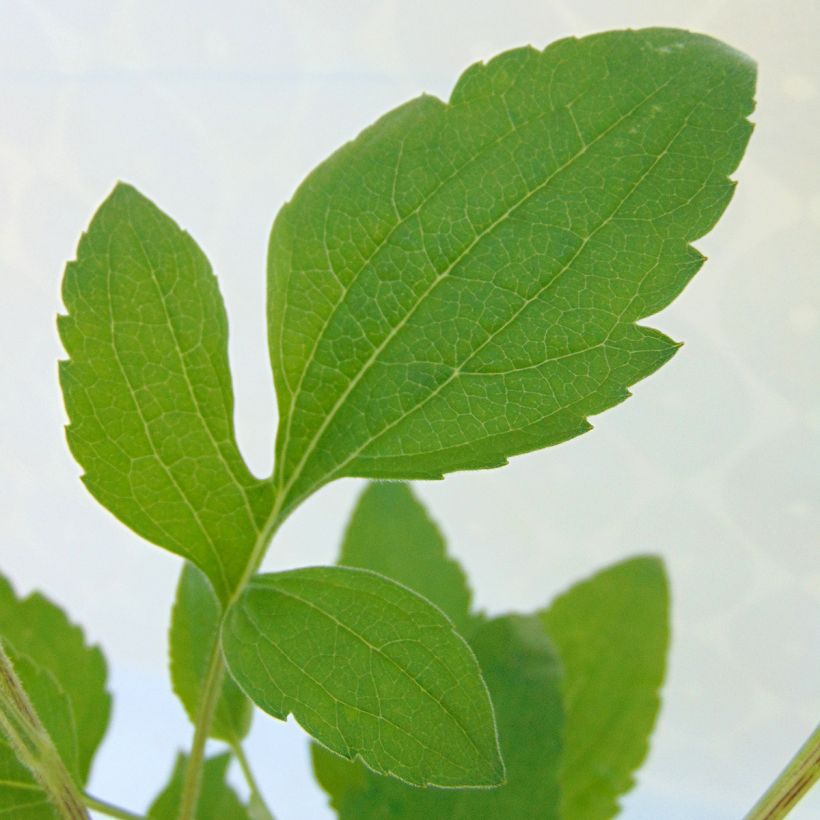

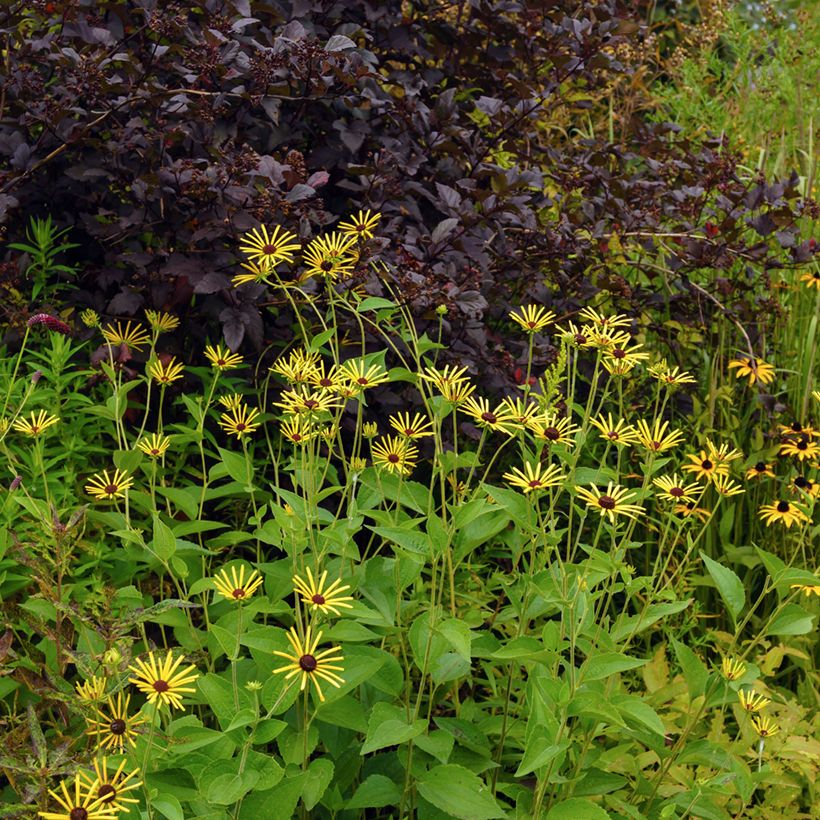

Flowering
Foliage
Plant habit
Botanical data
Rudbeckia
subtomentosa
Henry Eilers
Asteraceae
Sweet Coneflower, Sweet black-eyed Susan
North America
Other Rudbeckia
View all →Planting and care
Hardy and disease-resistant, this Rudbeckia subtomentosa is easy to grow and requires very little maintenance (simply prune the faded flowers in early November). It can thrive in ordinary soil, even clay or mediocre soil that occasionally becomes dry in summer, as long as it is properly loosened. The flowering will be more abundant if the soil remains moist at depth. Whilst it should be planted in a sunny location, this plant can tolerate partial shade quite well, better than R.fulgida. Trim the clump at the beginning of winter if you do not want the plant to self-seed. Even so, its seeds are a valuable food source for birds during the winter.
Planting period
Intended location
Care
-
, onOrder confirmed
Reply from on Promesse de fleurs
Similar products
Haven't found what you were looking for?
Hardiness is the lowest winter temperature a plant can endure without suffering serious damage or even dying. However, hardiness is affected by location (a sheltered area, such as a patio), protection (winter cover) and soil type (hardiness is improved by well-drained soil).

Photo Sharing Terms & Conditions
In order to encourage gardeners to interact and share their experiences, Promesse de fleurs offers various media enabling content to be uploaded onto its Site - in particular via the ‘Photo sharing’ module.
The User agrees to refrain from:
- Posting any content that is illegal, prejudicial, insulting, racist, inciteful to hatred, revisionist, contrary to public decency, that infringes on privacy or on the privacy rights of third parties, in particular the publicity rights of persons and goods, intellectual property rights, or the right to privacy.
- Submitting content on behalf of a third party;
- Impersonate the identity of a third party and/or publish any personal information about a third party;
In general, the User undertakes to refrain from any unethical behaviour.
All Content (in particular text, comments, files, images, photos, videos, creative works, etc.), which may be subject to property or intellectual property rights, image or other private rights, shall remain the property of the User, subject to the limited rights granted by the terms of the licence granted by Promesse de fleurs as stated below. Users are at liberty to publish or not to publish such Content on the Site, notably via the ‘Photo Sharing’ facility, and accept that this Content shall be made public and freely accessible, notably on the Internet.
Users further acknowledge, undertake to have ,and guarantee that they hold all necessary rights and permissions to publish such material on the Site, in particular with regard to the legislation in force pertaining to any privacy, property, intellectual property, image, or contractual rights, or rights of any other nature. By publishing such Content on the Site, Users acknowledge accepting full liability as publishers of the Content within the meaning of the law, and grant Promesse de fleurs, free of charge, an inclusive, worldwide licence for the said Content for the entire duration of its publication, including all reproduction, representation, up/downloading, displaying, performing, transmission, and storage rights.
Users also grant permission for their name to be linked to the Content and accept that this link may not always be made available.
By engaging in posting material, Users consent to their Content becoming automatically accessible on the Internet, in particular on other sites and/or blogs and/or web pages of the Promesse de fleurs site, including in particular social pages and the Promesse de fleurs catalogue.
Users may secure the removal of entrusted content free of charge by issuing a simple request via our contact form.
The flowering period indicated on our website applies to countries and regions located in USDA zone 8 (France, the United Kingdom, Ireland, the Netherlands, etc.)
It will vary according to where you live:
- In zones 9 to 10 (Italy, Spain, Greece, etc.), flowering will occur about 2 to 4 weeks earlier.
- In zones 6 to 7 (Germany, Poland, Slovenia, and lower mountainous regions), flowering will be delayed by 2 to 3 weeks.
- In zone 5 (Central Europe, Scandinavia), blooming will be delayed by 3 to 5 weeks.
In temperate climates, pruning of spring-flowering shrubs (forsythia, spireas, etc.) should be done just after flowering.
Pruning of summer-flowering shrubs (Indian Lilac, Perovskia, etc.) can be done in winter or spring.
In cold regions as well as with frost-sensitive plants, avoid pruning too early when severe frosts may still occur.
The planting period indicated on our website applies to countries and regions located in USDA zone 8 (France, United Kingdom, Ireland, Netherlands).
It will vary according to where you live:
- In Mediterranean zones (Marseille, Madrid, Milan, etc.), autumn and winter are the best planting periods.
- In continental zones (Strasbourg, Munich, Vienna, etc.), delay planting by 2 to 3 weeks in spring and bring it forward by 2 to 4 weeks in autumn.
- In mountainous regions (the Alps, Pyrenees, Carpathians, etc.), it is best to plant in late spring (May-June) or late summer (August-September).
The harvesting period indicated on our website applies to countries and regions in USDA zone 8 (France, England, Ireland, the Netherlands).
In colder areas (Scandinavia, Poland, Austria...) fruit and vegetable harvests are likely to be delayed by 3-4 weeks.
In warmer areas (Italy, Spain, Greece, etc.), harvesting will probably take place earlier, depending on weather conditions.
The sowing periods indicated on our website apply to countries and regions within USDA Zone 8 (France, UK, Ireland, Netherlands).
In colder areas (Scandinavia, Poland, Austria...), delay any outdoor sowing by 3-4 weeks, or sow under glass.
In warmer climes (Italy, Spain, Greece, etc.), bring outdoor sowing forward by a few weeks.































